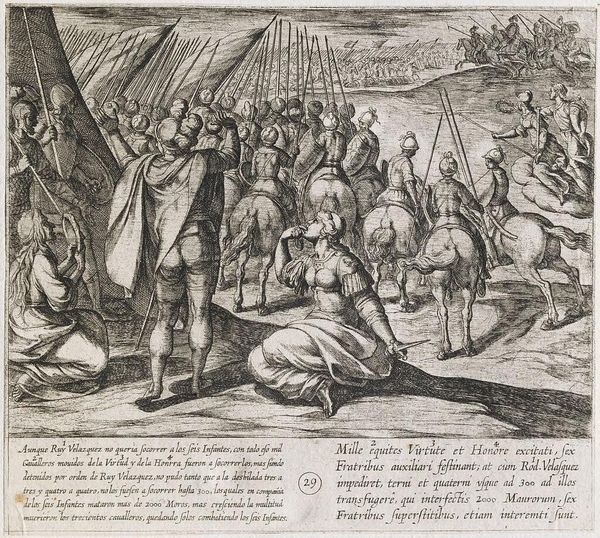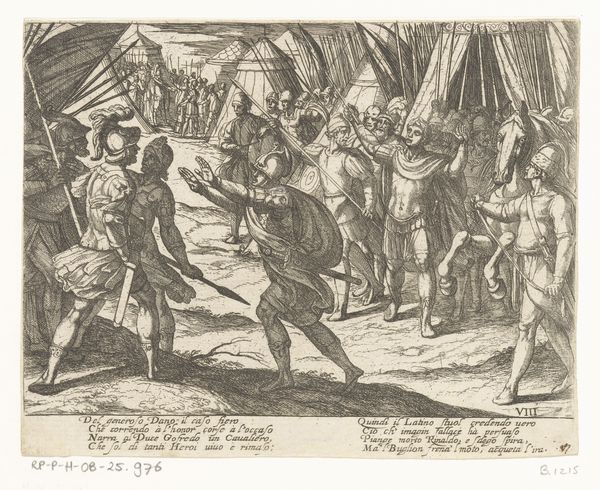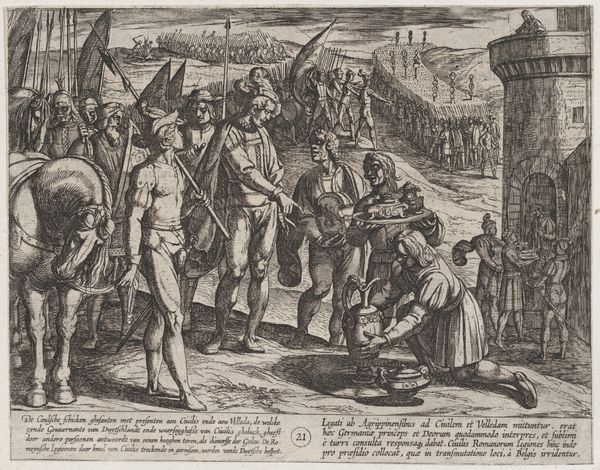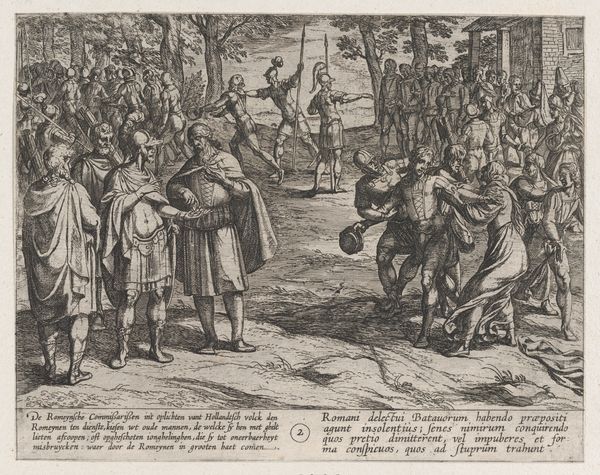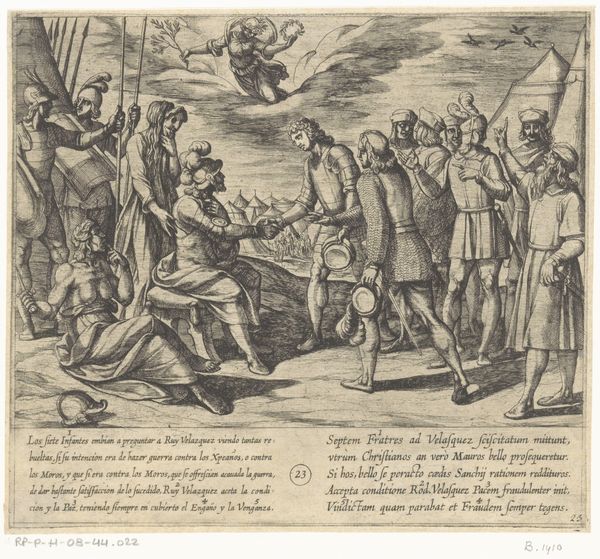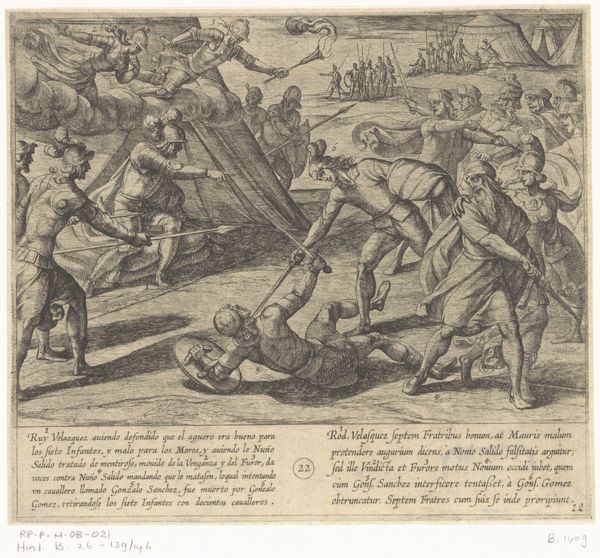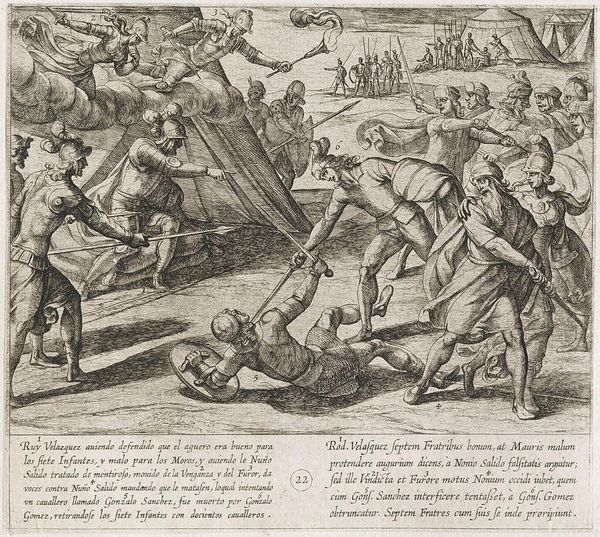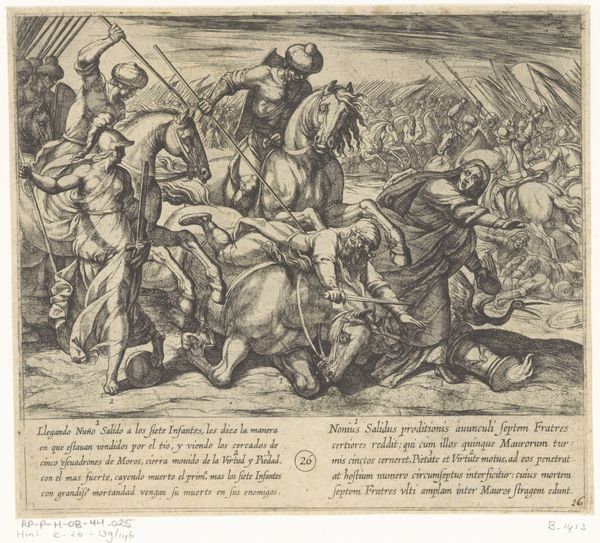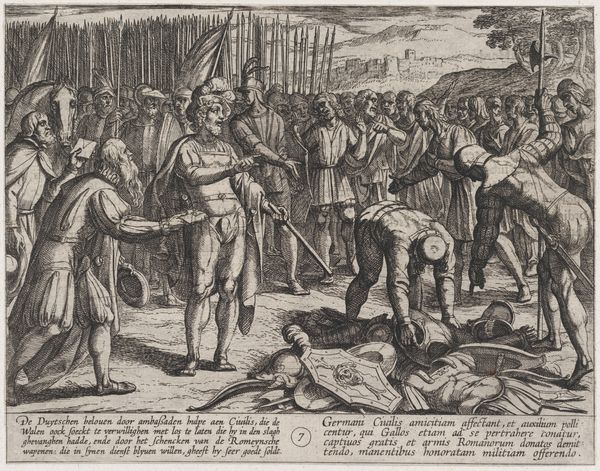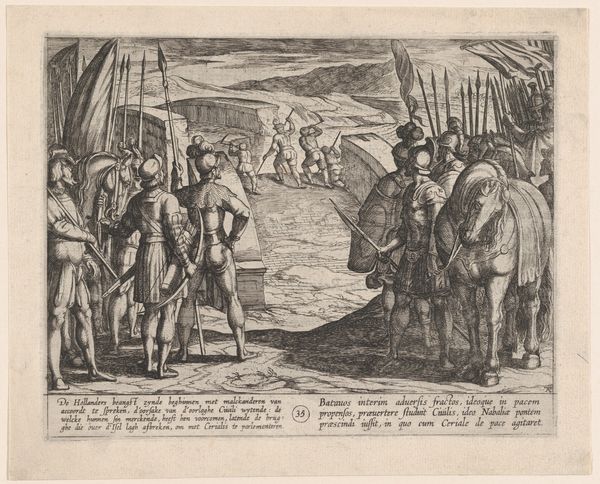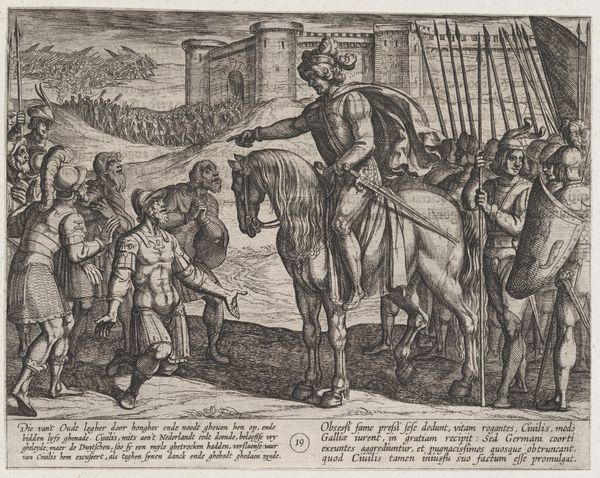
Al de ruiters die de zonen van Lara te hulp komen worden afgeslacht 1612
0:00
0:00
print, engraving
#
narrative-art
#
baroque
# print
#
figuration
#
history-painting
#
engraving
Dimensions: height 185 mm, width 206 mm
Copyright: Rijks Museum: Open Domain
Antonio Tempesta made this engraving, "All the riders who come to the aid of the sons of Lara are slaughtered," in the late 16th or early 17th century. It's now held at the Rijksmuseum. Tempesta, an Italian artist working in Rome, was known for his battle scenes and historical prints, often commissioned by the city's elite. This print exemplifies the period's fascination with military prowess and dramatic narratives. The image creates meaning through the visual codes of warfare, with lances and horses signifying power and movement. The narrative, inscribed at the bottom in Spanish and Latin, tells a tale of betrayal and sacrifice. We see the riders slaughtered while attempting to aid the sons of Lara. Understanding this print requires delving into the social and political context of its time. As art historians, we look at the institutional framework of patronage, printmaking, and distribution to appreciate how such images were consumed and interpreted. The social conditions of warfare and religious conflict certainly shaped its creation. It is through careful study of these factors that we can unlock the meaning of this dramatic artwork.
Comments
No comments
Be the first to comment and join the conversation on the ultimate creative platform.
